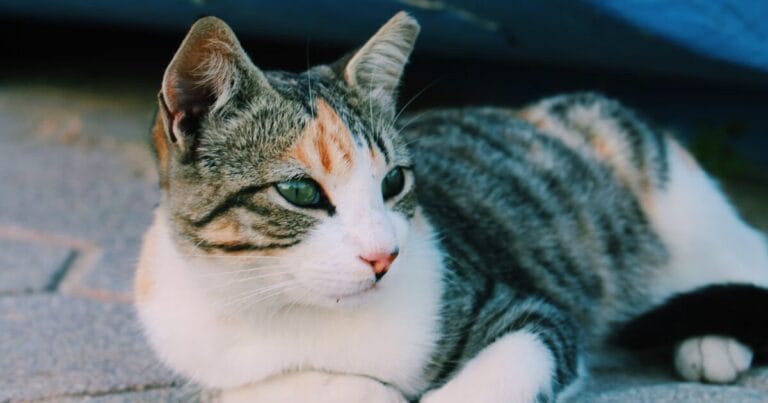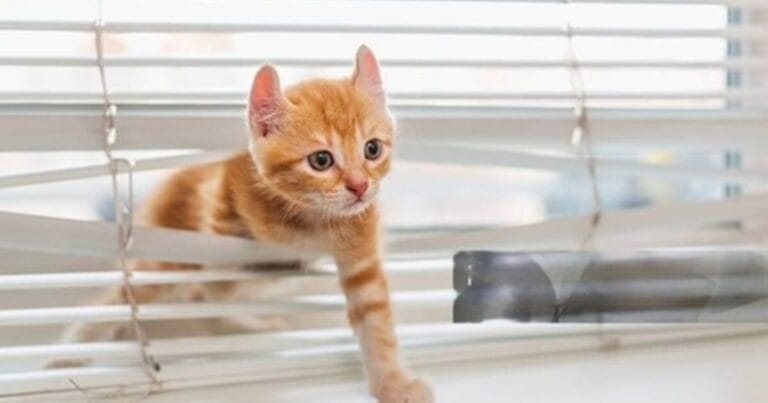“Curious cat owners, have you ever wondered why those seemingly harmless scratches from your feline friend can cause such an intense burning sensation? We’ve all experienced it – that fiery sting that leaves us wondering if our beloved kitties are secretly equipped with mini daggers. In this blog post, we unravel the mystery behind why cat scratches burn so bad and explore the intriguing science behind these seemingly innocent wounds. Get ready to scratch beneath the surface as we dive into this fascinating topic!”
Introduction: Explaining The Topic And Its Relevance:
Cat scratches can be painful and uncomfortable, causing a burning sensation lasting for hours or even days. This may leave many cat owners wondering why their beloved feline’s scratch feels like it’s on fire. The answer lies in the unique anatomy and behavior of cats and how our bodies react to these small wounds.
Explaining The Topic:
To understand why cat scratches burn so badly, we must first delve into the biology of cats. Unlike humans, who have flat nails on their fingers and toes, cats have retractable claws made of keratin – the same material that makes up our hair and nails. These sharp claws are used for hunting prey and climbing trees but also serve as a defense mechanism when a cat feels threatened.
When a cat scratches an object or another animal, its claws leave tiny puncture wounds. These wounds are not only deeper than human scratches but also narrower due to the shape of the feet. As a result, bacteria from a cat’s paws can easily get trapped inside these limited openings.
Relevance:
The burning sensation experienced after being scratched by a cat is not just limited to discomfort; it also has significant health implications. Cat scratches are notorious for causing infections such as Cat Scratch Disease (CSD), caused by bacteria called Bartonella henselae, found in most domestic cats’ saliva and fur.
While CSD typically presents mild symptoms such as fever and swollen lymph nodes near the scratch site, it can lead.
Anatomy of A Cat’s Claws And Their Purpose
Cats are known for their sharp claws, which can cause pain if they scratch you. But have you ever wondered why cat scratches burn so badly? To understand this, we must first examine the anatomy of a cat’s claws and their purpose.
The Structure Of Cat Claws:
A cat’s claws comprise several parts that form a functional hunting, climbing, and self-defense tool. The outer layer is called the claw sheath, made up of keratin – the same material that makes up human nails. Underneath the sheath is the quick, which contains blood vessels and nerves responsible for providing nutrients to the claws and sensation to the cat.
At the end of each claw is a pointed tip called the hook. This part causes the most damage when a cat scratches someone or something. The hook is designed to grip onto surfaces like tree bark or prey while inflicting damage.
Purpose Of Cat Claws:
So why do cats have such sharp claws? These retractable weapons serve multiple purposes in a feline’s life.
1. Hunting And Self-Defense:
Cats are natural-born hunters, and their sharp claws play an essential role in catching their prey. When hunting small animals like mice or birds, cats use their paws with extended feet to grab hold of their target firmly. Cats, as natural predators, possess an impressive array of hunting skills.
Their keen eyesight plays a vital role in spotting potential targets from afar, allowing them to track movements precisely.
Moreover, cats possess exceptional hearing abilities that enable them to detect even the faintest rustles or squeaks from unsuspecting prey.
They leverage their acute senses of smell to locate hidden prey or track scents left behind by creatures they hope to catch.
Additionally, cats are masters at utilizing their powerful hind legs for leaps and jumps when ambushing prey or scaling heights for better vantage points.
Composition Of A Cat’s Saliva And Its Effect On Human Skin:
Cats are known for their aloof and independent nature but also have some unique physical characteristics contributing to their behavior. One of these characteristics is the composition of a cat’s saliva, which can unexpectedly affect human skin.
Unlike humans, cats do not have sweat glands all over their bodies to regulate body temperature. Instead, they rely on panting and licking their fur to cool down. This means that cats’ saliva plays a crucial role in maintaining their body temperature and grooming themselves.
The composition of a cat’s saliva differs from that of other animals or humans. It contains high levels of bacteria-fighting enzymes, such as lysozyme and peroxidase, which help keep their mouths clean and kill harmful microbes in their food.
However, these enzymes are also responsible for the burning sensation we experience when scratched by a cat.
When a cat licks its fur or grooms itself with its rough tongue, it transfers the bacteria-fighting enzymes onto its claws. Therefore, when they scratch us, those enzymes come into contact with our skin and irritate us.
Moreover, cats’ saliva also contains histamine-like substances that can trigger allergic reactions in some people.
These substances are more concentrated in male cats’ saliva because they produce them during mating season to attract females. This explains why scratches from male cats tend to be more painful than those from female cats.
The amount of discomfort experienced after being scratched by a cat varies from person to person, depending on factors such as sensitivity.
Understanding The Mechanics Of A Cat Scratch: Depth, Direction, And Force
Understanding the mechanics of a cat scratch is essential in understanding why they can cause such intense burning sensations. A cat’s claws are their primary defense mechanism, and knowing how they work can provide insight into the force and direction behind a scratch.
Depth:
The depth of a cat’s claw depends on several factors, including breed, health, and age. On average, a cat’s claw can penetrate up to 1mm deep into the skin. However, if the scratching motion is forceful or repeated in one area, it can cause deeper wounds that may require medical attention.
Direction:
Cats’ claws are curved and retractable, allowing them to extend when needed for hunting or self-defense. When a cat scratches, their claws usually move upward towards their body. This action creates multiple small tears in the skin rather than one continuous cut. These tears also make it challenging for wounds to heal quickly, as each little tear needs time to close individually.
Force:
The force behind a cat’s scratch varies depending on its purpose. If your furry friend is playing around with you or another animal, their scratches will likely be light and not cause much damage or discomfort. However, when cats feel threatened or scared, they use more force behind their scratches as a defense mechanism.
Additionally, some cats may have stronger and sharper claws than others due to various factors such as genetics and lifestyle habits like outdoor vs. indoor living.
What Makes Cat Scratches Burn So Bad?
Cat scratches can often lead to a burning sensation due to several factors.
Firstly, cats possess sharp, thin claws designed for hunting and self-defense; as a result, when they scratch and break the skin’s surface, it causes micro-tears in the tissue. These tiny tears cause the release of inflammatory mediators such as histamine, which triggers an immediate immune response.
The body’s defense mechanism kicks into action by increasing blood flow to the affected area while sending white blood cells to fight any potential infection. This increased circulation exacerbates the burning sensation experienced after a cat scratch.
Moreover, cat saliva contains allergenic proteins that can be transferred onto their nails during grooming or scratching. When these proteins come into contact with broken skin caused by a scratch, it may trigger an allergic reaction in some individuals, leading to further irritation and discomfort in the form of intense burning sensations.
Ultimately, both mechanical damage from clawing and biological responses within our bodies contribute to why cat scratches have such an agonizing burn effect on our skin.
Common Symptoms And Reactions To Cat Scratches:
Cat scratches can cause a lot of discomfort and pain, and it’s not uncommon for people to experience a burning sensation after being scratched by their feline friends. This is because cat scratches can introduce bacteria into the skin, leading to inflammation and irritation.
This section will discuss the common symptoms and reactions individuals may experience after being scratched by a cat.
1. Redness and Swelling:
The first sign of a cat scratch is usually redness and swelling around the affected area. This is caused by the body’s natural immune response to any foreign object entering the skin. The swelling occurs as white blood cells rush to the injury site to fight off potential infections.
2. Pain and Discomfort:
Cat scratches can be painful, especially if they are deep or have broken the skin. A cat’s sharp claws can cause tiny skin tears, leading to nerve damage and increased sensitivity in the affected area. This pain can range from mild discomfort to a more intense burning sensation.
3. Itchiness:
Many people also report intense itchiness after being scratched by a cat. This is again due to the body’s inflammatory response as histamines are released, causing an itchy sensation around the Wound.
4. Formation of Scabs:
As with any wound, scabs may form over time as part of the healing process after a cat scratch injury. These scabs are made up of dried blood cells and other fluids that help protect the skin.
The Role Of Bacteria In Causing Pain And Inflammation:
Bacteria are tiny microorganisms found all around us, including on our skin. While some bacteria can be beneficial and essential for our health, others can cause harm and lead to various medical conditions. Regarding cat scratches, the role of bacteria becomes an important factor in understanding why they can often burn so badly.
The most common type of bacteria found on cats’ claws and paws is called Pasteurella multocida. This bacterium is commonly present in the mouths of healthy cats and can also be found under their nails.
When a cat scratches you, these bacteria can enter your skin through the Wound caused by their sharp claws.
Once inside your body, these bacteria can start multiplying rapidly, leading to infection. Infection occurs when the immune system responds to these foreign invaders by sending white blood cells to fight them. As a result, inflammation occurs at the site of injury or Wound.
Inflammation is a natural response of the body’s immune system to protect against potential threats such as infection or injury. It is characterized by redness, swelling, heat, and pain in the affected area. In the case of cat scratches, this pain can feel intense due to the high concentration of nerve endings in our hands and fingers.
As the bacterial population grows within your Wound, they produce toxins that further aggravate inflammation and pain. These toxins also stimulate more pain receptors in your body’s nervous system, causing a burning sensation that may last several hours or even days afterward.
Factors That Can Worsen The Burning Sensation From A Cat Scratch:
Factors that can worsen the burning sensation from a cat scratch include various environmental and individual characteristics. These can exacerbate the already painful feeling caused by the cat’s sharp claws and saliva, making it even more uncomfortable for those who have been scratched.
1. Allergies:
Some people may be allergic to cats or their saliva, making a cat scratch burn much worse. The allergic reaction causes inflammation in the affected area, leading to intense itching, redness, and swelling. This heightened immune response can also amplify the burning sensation felt from a cat scratch.
2. Location of the Scratch:
Where on your body you’ve been scratched by a cat also significantly determines how badly it burns. Areas with thinner skin, like the face, neck, and hands, tend to feel more pain than areas with thicker skin, like arms or legs. Additionally, scratches near joints or bony regions are more sensitive as there is less tissue between the skin and bone.
3. Depth of Scratch:
The severity of a cat scratch depends on how deep it penetrates your skin. Superficial scratches may cause mild discomfort, while deeper ones can lead to intense burning sensations accompanied by bleeding and scarring.
4.Unhygienic Conditions:
If you have not cleaned your Wound properly after being scratched by a cat, bacteria from their saliva or claws can enter through broken skin, causing an infection that leads to increased inflammation and a delayed healing process. This worsens the burning sensation due to prolonged irritation of bacteria.
Tips for treating and preventing burns from cat scratches
Treating and preventing burns from cat scratches can be challenging, especially if you are a cat owner prone to allergies or have sensitive skin. Cats’ sharp claws can easily cause minor cuts and scrapes on the skin’s surface, which may seem harmless at first but can quickly turn into painful burns due to their saliva.
Here are some helpful tips for treating and preventing burns from cat scratches:
1. Cleanse the Wound Immediately:
When you notice a scratch or cut on your skin caused by your cat’s claws, it is essential to clean it thoroughly with mild soap and water. This will help remove any bacteria or germs in their saliva that could lead to inflammation and infection.
2. Apply an Antibacterial Ointment:
After cleaning the Wound, apply an antibacterial ointment such as Neosporin or Bacitracin to prevent any infection from developing. These ointments also help soothe the burning sensation and promote faster healing.
3. Use Cold Compress:
If you experience a burning sensation after getting scratched by your cat, apply a cold compress immediately. Wrap some ice cubes in a clean cloth and gently press it against the affected area for 10-15 minutes. This will help reduce pain and swelling.
4. Avoid Scratching or Picking at the Wound:
It is crucial not to scratch or pick at the Wound caused by a cat scratch as this could worsen the burn and increase your risk of developing allergies.
Myth bust:
There are many myths surrounding the burning sensation caused by cat scratches.
One of the most common myths is that it is due to the saliva of cats, which supposedly contains a toxic substance. However, this is not true.
The truth is that the burning sensation is caused by a bacterial infection known as Cat Scratch Disease (CSD).
This infection is caused by a bacteria called Bartonella henselae, found in flea feces and can enter the body through a scratch or bite from an infected cat.
Another myth suggests that only outdoor cats carry this bacteria, but in reality, both indoor and outdoor cats can be carriers of Bartonella henselae.
The bacteria can also be found in other animals, such as dogs and rodents, making it possible for humans to contract CSD from any animal scratch or bite.
It is also commonly believed that only deep scratches cause CSD. However, even small superficial scratches can lead to an infection if they come into contact with the bacteria.
This highlights the importance of properly cleaning any Wound inflicted by an animal.
Some people believe that applying heat to a cat scratch will alleviate the pain and burning sensation.
While heat may provide temporary relief, it does not affect the actual cause of the burning sensation – the bacterial infection. It is important to seek medical attention if you experience symptoms such as redness, swelling, or warmth around a cat scratch.
Conclusion
In conclusion, cat scratches may seem like minor injuries, but they can cause much pain due to the bacteria in a cat’s saliva. It is important to clean and treat these scratches to prevent any infections properly. Additionally, trimming your cat’s nails and providing them with scratching posts can help minimize the occurrence of blemishes. With proper care and attention, you can enjoy the company of your feline friend without experiencing any burning sensations from their sharp claws.




